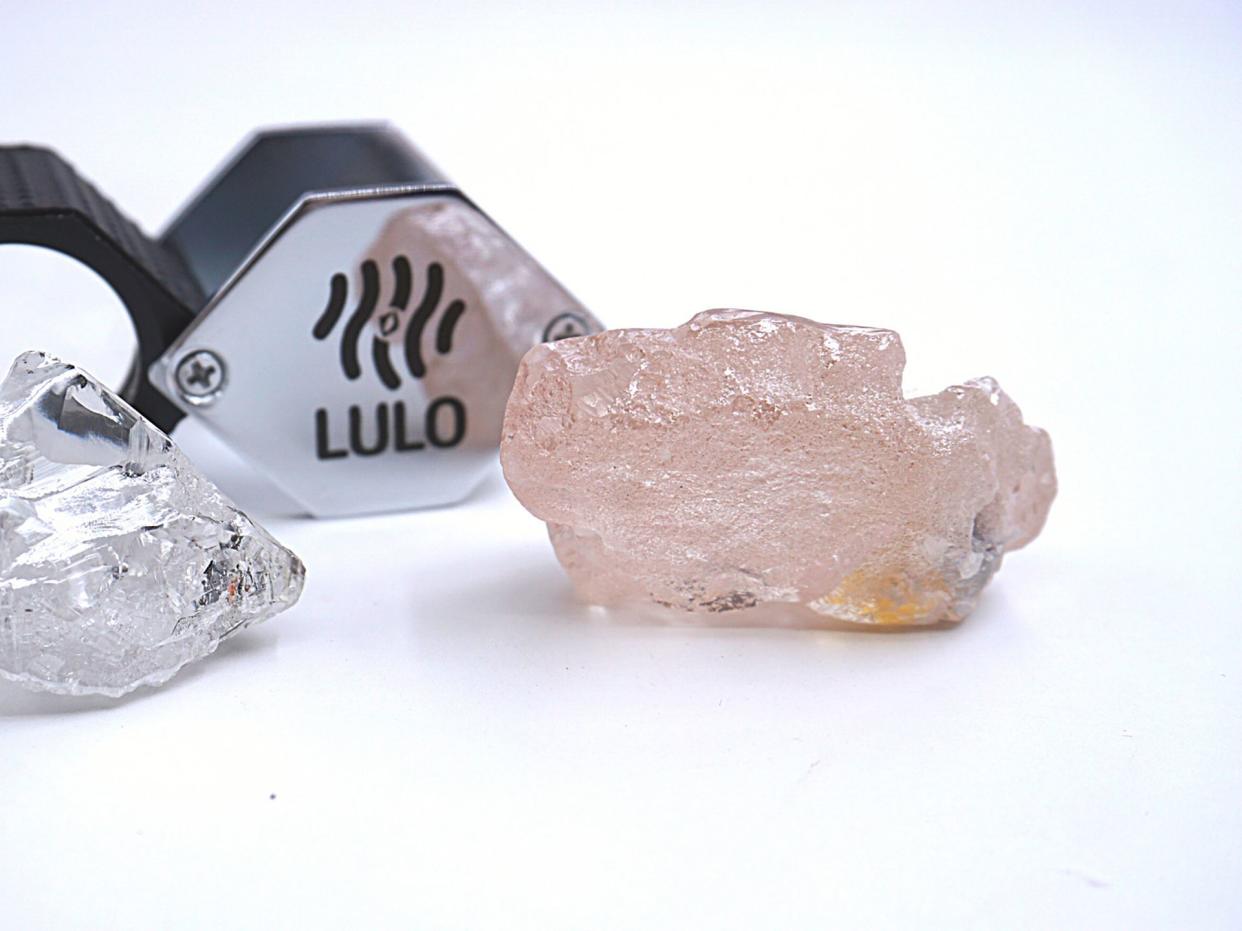Pink, 170-carat diamond discovered in Angola could be rarest in 300 years
A 170-carat pink diamond found in Angola may be the largest such stone to be unearthed in 300 years.
“Only one in 10,000 diamonds is colored pink,” Stephen Wetherall, CEO of the Lucapa Diamond Company, told The Associated Press. “So you’re certainly looking at a very rare article when you find a very large pink diamond.”
The riverbed the diamond was mined from has yielded 27 diamonds of 100 carats or more, the company said in a statement on its website. The pink gemstone is the fifth-largest of them all.
Expert opinion corroborated the rarity of the find dubbed the Lulo Rose, if not the time interval. It comes from the alluvial Lulo mine, where Lucapa is searching for kimberlite pipes, the underground deposits that are the main source of the diamonds, Wetherall told AP from the company’s Australian headquarters.

This photo supplied by Lucapa Diamond Company on Wednesday shows the 170 carat pink diamond, right.
“It’s an extremely large, quite rare, pink diamond,” Tom Moses, executive vice president and chief laboratory and research officer of the nonprofit Gemological Institute of America, told the Daily News. “That is among the largest pink rough diamonds that I’m aware of.”
Its classification as a Type IIa sets it apart from most others, Moses said. Typically, there are nitrogen traces in such diamonds, but this has barely any, just a few parts per million, making it “an extremely pure diamond,” he said.
Pink diamonds get their hue from the structure of their crystals, rather than from mineral traces entwined within, according to the Gemological Institute of America’ website. This can render them more valuable, though their eventual worth, or their color once refined, cannot be told at the outset.
“Top, vivid-colored stones can bring more than $2 million per carat at major auctions,” the institute said. “Such prices come from their rarity as much as their beauty – only a tiny percentage of diamonds have pink color, and only a tiny percentage of these have a rich, vivid color.”
This pink diamond will be sold by international tender, which are sealed bids, by Angolan state diamond marketing company Sodiam. Its ultimate value will depend on its final form and color once it’s carved and polished, Moses said.
It comes from the same source as a 404-carat clear diamond found back in 2016, which was deemed worth $14 million at the time for the raw stone.
More recently, the polished version of the world’s largest pink diamond, “The Sakura,” set in a 15.8 carat ring, sold for a record-breaking $29.3 million at a Christie’s auction in May of last year.
The latest find will be studied for months before being ground down and polished, Moses told The News.
Aside from potentially being worth millions, the diamond is a sort of time machine, giving a look back at Earth’s origins, or close to them. It seems to have been formed in the lower part of Earth’s mantle, rather than the upper part, which is where most diamonds form, Moses said.
The inclusions, or mineral formations, trapped within it could be about 3 billion years old, he said. This makes it as much of a window back in time as the Webb telescope is to the cosmos.
“It’s just looking the other way,” Moses said.
As such the gemstone is a real find for geologists seeking information about Earth’s origins, for its insight into the composition of Earth’s mantle not long after our planet’s formation 4 billion years ago, he said.
“This is a sampling of maybe three billion years ago of that part of the Earth that has been totally encapsulated and preserved in this crystal,” Moses said. “For those who study the geology of the Earth, this is the only way to find out.”
